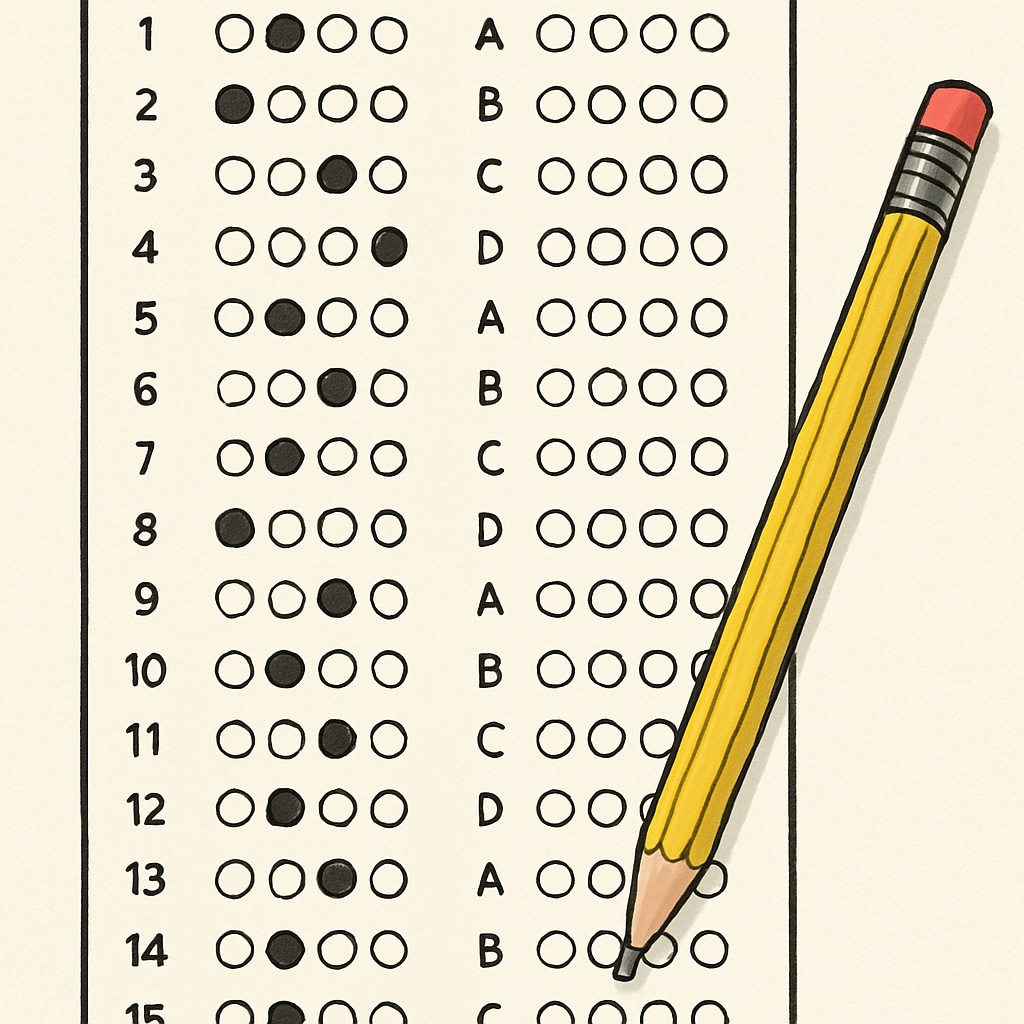Math anxiety, exam stress, and the struggle with multiple-choice questions are common challenges faced by high school students. These hurdles not only impact academic performance but also undermine confidence and motivation. To help students succeed, it is essential to address these issues with tailored strategies that turn anxiety and confusion into opportunities for growth.
Understanding Math Anxiety and Exam Stress
Math anxiety refers to the intense feeling of fear or apprehension that arises when dealing with mathematical tasks. It is often triggered by past failures, negative experiences, or the pressure to perform well. Exam stress, on the other hand, is the nervous tension experienced before or during an assessment. Combined, these factors can create a paralyzing mental block for students.
Interestingly, multiple-choice questions amplify this anxiety for many students. Unlike open-ended problems, these questions present several “trap” options, increasing the likelihood of second-guessing and self-doubt. However, understanding the root causes of these fears is the first step toward overcoming them.

Strategies to Manage Math Anxiety
Overcoming math anxiety requires a combination of mindset shifts and practical techniques. Here are some strategies to consider:
- Practice mindfulness: Breathing exercises and mindfulness techniques can help calm your nerves before a test.
- Focus on preparation: Confidence grows with familiarity. Allocate time to practice math problems regularly to reduce last-minute panic.
- Break down problems: Complex math problems can seem intimidating. Break them into smaller steps to make them more manageable.
- Seek help: Don’t hesitate to ask teachers or peers for clarification on challenging topics.
- Visualize success: Positive visualization can help condition your mind to associate math with success rather than failure.
Mastering Multiple-Choice Questions
Multiple-choice questions (MCQs) often pose unique challenges, as they require students to identify the best answer among several options. However, with the right approach, they can become less daunting. Consider these tips:
- Read carefully: Pay close attention to the question and all answer choices before making a decision.
- Eliminate wrong answers: Narrow down your options by crossing out choices that are clearly incorrect.
- Trust your instincts: If you’ve prepared thoroughly, your first choice is often the correct one. Avoid overthinking.
- Watch for traps: Words like “always” or “never” may indicate extreme answers that are less likely to be correct.
- Manage time wisely: Don’t spend too long on a single question. Mark it and return later if needed.
For additional reading on multiple-choice strategies, consider resources like the Britannica guide on multiple-choice questions.

Turning Pressure into Motivation
While anxiety and stress can feel overwhelming, they can also be transformed into productive energy. Here’s how:
- Set realistic goals: Break your study goals into smaller, achievable targets to avoid feeling overwhelmed.
- Reward progress: Celebrate small successes to build momentum and confidence.
- Maintain perspective: Remember that one test does not define your abilities or future.
- Stay active: Regular physical activity can help reduce stress and improve focus.
In addition, developing a healthy study routine that includes breaks and time for relaxation can make a significant difference. For insights into stress management, explore resources like the Wikipedia article on stress management.
Conclusion: Building Confidence in Mathematics
Conquering math anxiety, exam stress, and the challenges of multiple-choice questions is undoubtedly difficult. However, by adopting the right strategies, students can build resilience and confidence in their mathematical abilities. Remember, progress takes time, and every step forward is a victory worth celebrating. With persistence and the right tools, success in mathematics is within reach for every student.
Readability guidance: This article uses short paragraphs, clear transitions, and actionable lists to ensure readability. Active voice is prioritized, and technical terms are explained where necessary to support a diverse audience.


